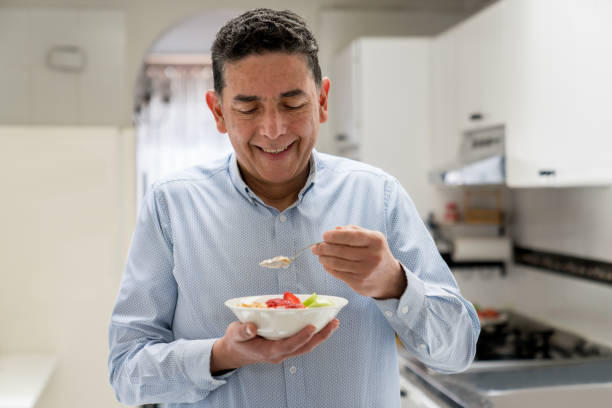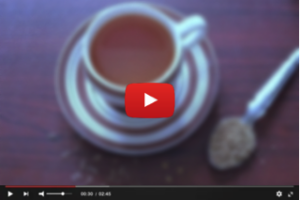The #1 Rated Blood Sugar Formula
Morning Foods That Can Be Helpful in Lowering Hypertension

Maintaining a normal blood pressure is important as it allows nutrients and oxygen to be delivered to all parts of the body, including important organs like your heart, brain, and kidneys. According to the US National Health and Nutrition Examination Survey, 70 percent of adults 65 and older have high blood pressure (also known as hypertension). If you have hypertension, you are put at risk for a stroke and heart disease, which are leading causes of death in the country. By eating a low sodium diet rich in calcium, magnesium, and potassium called the DASH diet, you can take the necessary steps to lower your blood pressure. Read on to learn about foods you can incorporate into your diet to stay healthy.
What meals are good for high blood pressure?
Dietary Approaches to Stop Hypertension (DASH) is an eating plan rich in fruits, vegetables, whole grains, fish, poultry, nuts, legumes, and low-fat dairy. These foods are high in key nutrients such as potassium, magnesium, calcium, fiber, and protein.What to Eat for Breakfast with High Blood Pressure
Eating a healthy, nutritious, and low sodium breakfast can set the stage for the meals you eat later in the day. The right breakfast foods can help control your blood pressure numbers and enhance your flow of energy. Here are some healthy options to eat for breakfast with high blood pressure:Oatmeal
Oatmeal is high in fiber and low in sodium. When prepared with a lower fat or nondairy milk, it’s the perfect start to the day for anyone with high blood pressure. Try adding cinnamon or nuts for a richer flavor, but avoid adding too much butter or cream. As a bonus, it’s also easy to prepare!Eggs
Eggs are high in protein and one of the more popular breakfast options. While egg yolks are known for being high in cholesterol, recent studies have found that there are some nutrients in the yolks that have health benefits. Try eating a single whole egg or two egg whites as part of a heart healthy breakfast, but you don’t need more than that in one day. Scramble up some egg whites and serve with vegetables for a delicious and satisfying treat.Yogurt and Berries
A cup of low fat or fat free yogurt per day isn’t just a great source of calcium, it is also great for those with high blood pressure. Top with berries as they contain essential vitamins and are high in antioxidants.Whole Grain Bread, Bagels and English Muffins
These whole-grain breakfast foods are a great source of healthy nutrients such as potassium and fiber which is linked to lowering blood pressure. Make sure to choose whole grains foods over anything made with highly refined white flour.Low Salt Snacks for High Blood Pressure
Snacking is something we all fall victim to. Grocery stores are filled with snack isles containing chips, cookies, crackers, pretzels, nuts and more! All of these unhealthy snacks are loaded with salt and are often the first thing we reach for when we are hungry. Here is what to look for when selecting healthy low-sodium snacks:Unsalted Nuts
Nuts are packed with protein and are a favorite healthy snack item. For those with high blood pressure, incorporating nuts into your diet will give you a boost of unsaturated fats, omega-3 fatty acids, fiber, and more. When choosing your nuts, be sure to look for raw or dry-roasted unsalted nuts and limit your serving to a small handful.Dark Chocolate
According to research from Harvard, dark chocolate is a great dessert replacement for those with high blood pressure. It tends to have less sugar than milk chocolate or other sweets. Cocoa (found in dark chocolate) is rich in a plant chemical called flavanols which is shown to support the production of nitric oxide in the inner lining of blood vessels. This process helps to improve blood flow and relax blood vessels which ultimately lowers blood pressure.Fruits and Vegetables
According to the American Heart Association, foods rich in potassium are important in managing high blood pressure. The more potassium you eat, the more sodium you lose through urine. Also, potassium helps ease tension in the blood vessel walls, which helps lower blood pressure even further. That being said, there are numerous fruits and vegetables rich in potassium to include in your diet. Here are several to choose from:- Apricots
- Avocados
- Cantaloupe and honeydew melon
- Grapefruit
- Greens
- Lima Beans
- Mushrooms
- Oranges
- Peas
- Potatoes
- Prunes and Raisins
- Spinach
- Tomatoes
- Fruit Smoothies
Drinks That Lower Blood Pressure
Cutting back on soda, caffeinated drinks and alcohol is a good way to maintain healthy blood pressure. Many of these drinks can raise blood pressure levels, so it’s crucial to seek good, heart-healthy alternatives.Water
Water is essential to the functions of the body and is the most beneficial drink. It is known to flush out waste, regulate body temperature, maintain blood pressure, and more. In addition, a lack of water can result in the blood to become thicker, which can increase blood pressure. Make sure to stay hydrated by drinking water throughout the day!Green Tea
Green tea and other herbal teas are steeped in antioxidants and have wonderful immune-boosting effects. No wonder why it has been used for centuries for medicinal use. Research suggests it may lower blood pressure when consumed on a long-term basis.Low-fat Milk
Research suggests that consuming low-fat dairy products such as fat-free and low-fat milk can lead to low blood pressure. Milk is packed with essential nutrients, including calcium, vitamin D and other nutrients that have a beneficial effect on blood pressure.Low Sodium Seasoning for High Blood Pressure
Seasonings are a hidden source of salt, and enhancing a dish’s flavor profile doesn’t mean you have to add seasonings high in salt. Here are some alternatives seasonings to add to your meals:- Basil
- Bay Leaves
- Cinnamon
- Cumin
- Garlic
- Ginger
- Nutmeg
- Oregano
- Paprika
- Parsley
- Rosemary
- Thyme
Low Sodium Proteins for Hypertension
Protein is an essential nutrient for a well-balanced diet, so it’s important to incorporate it into your diet. However, many high protein foods are also high in fat and sodium. Here are some protein options that are both delicious and low in sodium:- Beans and lentils
- Fresh or frozen fish
- Lean cuts of beef and pork
- Skinless chicken and turkey
- Unsalted nuts and seeds






